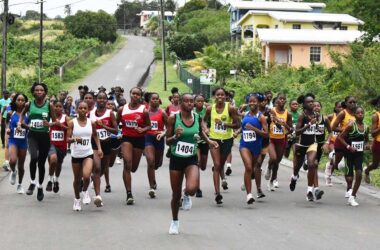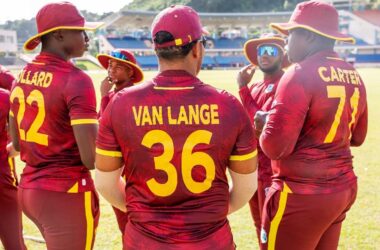ICC News
The ICC U19 Cricket World Cup has developed into an elegant event that showcases the best of the next generation and is acknowledged as the graduating school for top-class cricketers around the world.
The tournament, which is held every two years, replicates a major global tournament experience in terms of organization, giving the future stars not only a chance of playing top-level age-group cricket but also experiencing first-hand, the paraphernalia that goes with senior international cricket, including broadcast matches, anti-doping procedures, anti-corruption education and media interactions.

With alumni that include several past and present stars like Steve Smith of Australia, Joe Root of England, ViratKohli of India, Kane Williamson of New Zealand, Inzamam-ul-Haq of Pakistan, Graeme Smith of South Africa, SanathJayasuriya of Sri Lanka and Brian Lara of the Windies, each edition is now looked forward to by fans as they get a chance to identify future stars.
The tournament was first held in Australia in 1988 as part of the celebrations for the Australian Bicentenary and became a regular feature from 1998.
Australia and India have won the tournament three times each, Pakistan are the only side to have won two consecutive titles, in 2004 and 2006, while England, South Africa and defending champions Windies are the other sides to have won the tournament.
Australia were victorious in the 1988 tournament, beating Pakistan by five wickets at the Adelaide Oval in what was a unique event then. Never had so many young cricketers come together for such a huge event and players got an early taste of international cricket.
Australia chased a target of 202, powered by a Bred Williams century. Though several players went on to attain stardom, one player who came into the tournament as a star was India leg-spinner Narendra Hirwani, fresh from a sensational debut in which he had grabbed 16 for 136 against the Windies. However, it was another leg-spinner from neighbouring Pakistan, Mushtaq Ahmed, who finished as the most successful bowler with 19 wickets in the tournament.
Mushtaq emphasizes on the importance of the tournament and says he still remembers almost every moment from the inaugural event which he considers a huge opportunity for participants.
Mushtaq Ahmed said: “I remember playing big guns like (Brian) Lara, (Mike) Atherton, Chris Lewis. When you start representing your country, you remember everything, when the dream is coming true. I remember every guy who played with me or against me. Basit Ali, Aqib Javed, Inzamam-ul-Haq, others who played (only) a few games.”
The tournament resumed in 1998, when it was held in South Africa. It was now expanded to 16 sides in a bid to provide exposure to more teams and was played on a new format that had separate Super League and Plate championships.
England won the Super League final chasing a target of 242 against New Zealand with opener Stephen Peters notching a century. In the plate championship, Bangladesh defeated the Windies by six wickets despite a belligerent 141 from Chris Gayle, who was to later establish himself as one of the biggest hitters of the game.
Sri Lanka played host to the 2000 tournament and made their only entry into the final where they lost to Mohammad Kaif-led India after managing only 178 runs in Colombo. In the Plate final in Kandy, South Africa defeated Bangladesh by 80 runs with future national captain Graeme Smith top-scoring with 51 and future England batsman Jonathan Trott contributing 41.
Australia won their second title in 2002 in New Zealand, defeating South Africa by seven wickets in the Super League final while Zimbabwe won the Plate championship final defeating Nepal by 137 runs with TatendaTaibu winning the player of the tournament award.
Hashim Amla, who led South Africa to the final, says he “thoroughly” enjoyed playing in that U19 CWC and that players who figure in the tournament become household names in later years.
Hashim Amla said: “There are a few players that I have played with in the South African (U19) team that I managed to (also) play for South Africa afterwards and that experience was hugely beneficial.
“You get a sense of where you are at and that can motivate you. It gives you an insight into that. You have to keep improving – the U19 World Cup is about fun, intensity and you are giving it all, no matter what.”
Pakistan won back-to-back titles in 2004 (Bangladesh) and 2006 (Sri Lanka). They defeated the Windies by 25 runs in the Super League final in Dhaka while in Colombo two years later they triumphed over India by 38 runs in a low-scoring encounter with their present captain Sarfraz Ahmed leading the side. Bangladesh defeated Australia in the 2008 Plate final while Nepal defeated New Zealand in 2006 to take the Plate championship.
The 2008 edition in Malaysia saw ViratKohli lead India to victory over South Africa by 12 runs with the Duckworth-Lewis method. Australia’s Steve Smith and New Zealand’s Kane Williamson completed a triumvirate of future super stars from the tournament, in which the Windies defeated Nepal by seven wickets in the Plate final.
The 2010 edition, which was held in New Zealand for the second time, was won once again by Australia as the Mitchell Marsh-led side defeated Pakistan by 25 runs in the final of the Super League. In the Plate Championship final, Bangladesh defeated Ireland by 175 runs.
The United Arab Emirates played host to the 2014 edition, which was won by South Africa for the first time as they defeated Pakistan by six wickets in the Super League final to complete an unbeaten run. Bangladesh defeated New Zealand by 77 runs to win the Plate Championship final.
The Windies won the 2016 tournament in Bangladesh in what turned out to be a dream year for them. The U19 triumph was followed with their men’s and women’s sides winning the ICC World Twenty20 tournaments in India. The Windies defeated India by five wickets in the Super League Final while the Plate Championship was won by Afghanistan as they defeated Zimbabwe by five wickets.



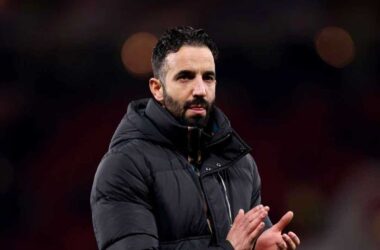
![Rasmus Hojlund celebrates a goal [Photo credit :© Guglielmo Mangiapane (REUTERS)]](https://thevoiceslu.com/wp-content/uploads/2025/12/Rasmus-Hojlund-celebrates-a-goal-380x250.jpg)
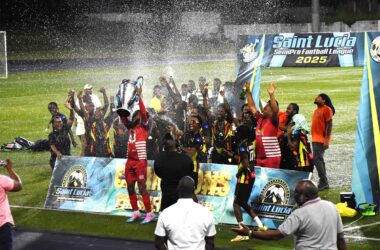
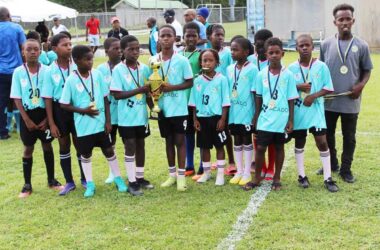
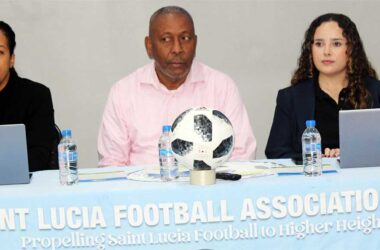
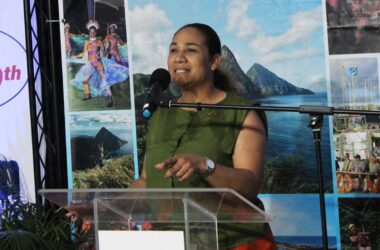
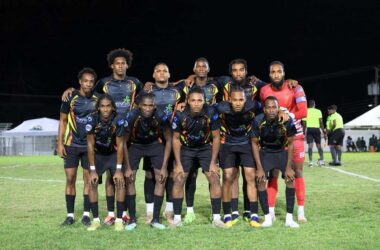
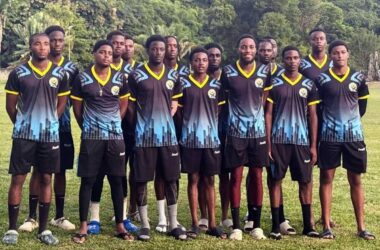
![FIFA President Gianni Infantino speaks during draw for 2026 soccer World Cup [Photo credit : AP Photo / Stephanie Scarbrough, Pool]](https://thevoiceslu.com/wp-content/uploads/2025/12/FIFA-President-Gianni-Infantino-380x250.jpg)
![Sidwan Ballerz - Tier 1 Corporate Warfare Futsal Champions [photo credit : Corporatewarfare]](https://thevoiceslu.com/wp-content/uploads/2025/12/Sidwan-Ballerz-380x250.jpg)
